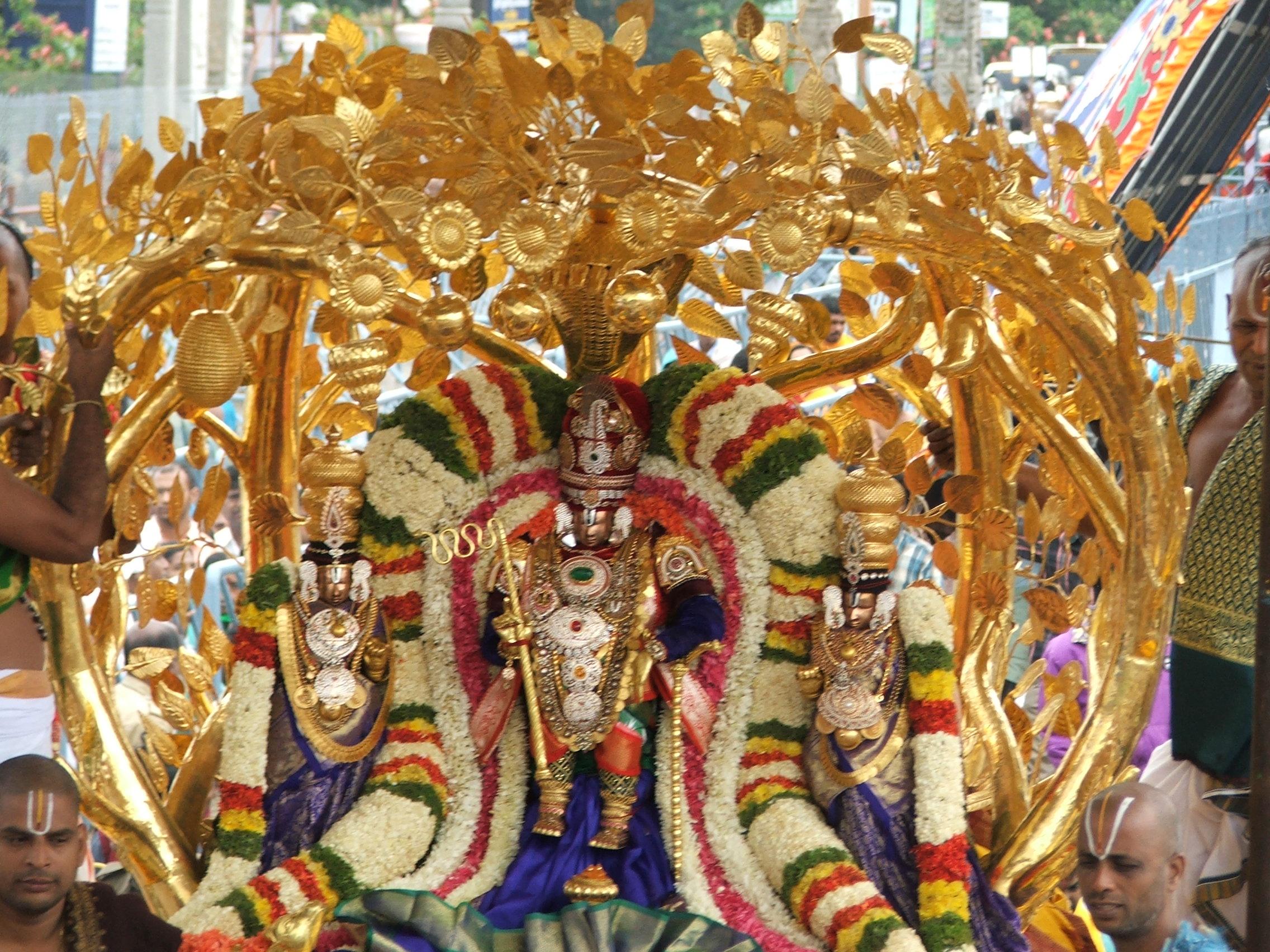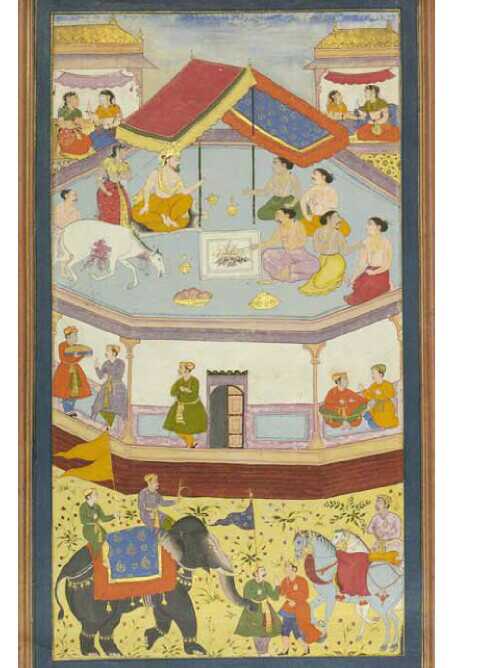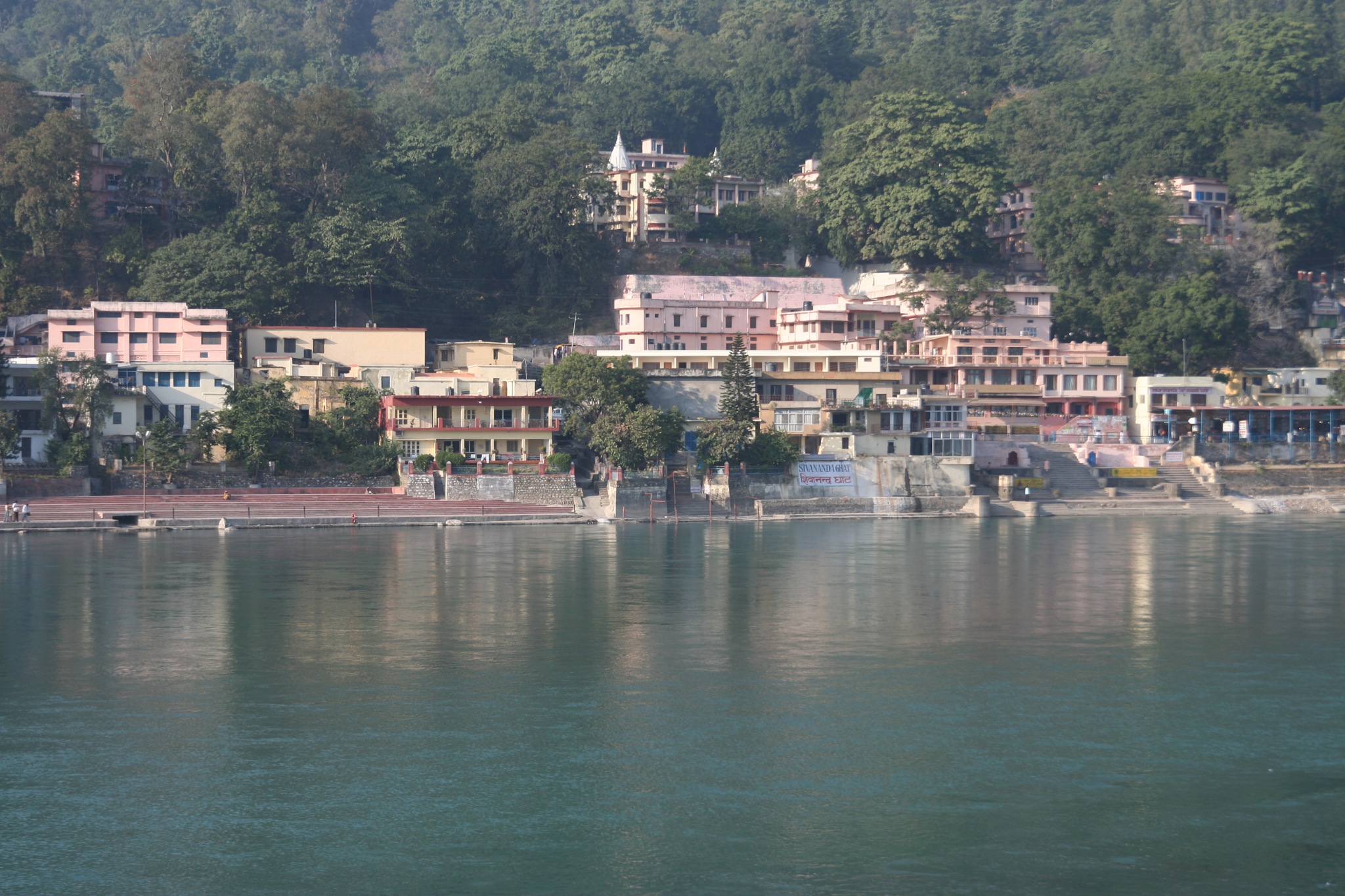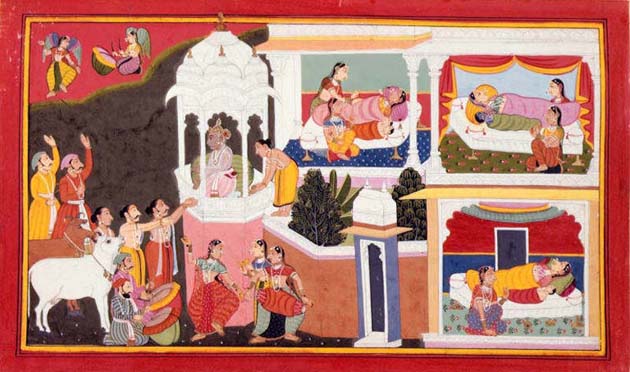|
Sri Rama Rajyam
''Sri Rama Rajyam'' () is a 2011 Indian Telugu-language Hindu mythological film directed by Bapu who co-wrote the film with Mullapudi Venkata Ramana, and produced by Yalamanchali Saibabu. The film stars Nandamuri Balakrishna, Nayanthara, Akkineni Nageswara Rao, Srikanth, and its music was composed by Ilaiyaraaja. The film was Bapu's final directorial venture. Based on the epic Ramayana, it depicts Rama's rule of Ayodhya after he returns home from Lanka, his separation from Sita and her reclusive life in the forest as she raises their children Lava and Kusa. Sri Rama Rajyam is a reboot of the 1963 blockbuster film ''Lava Kusa''. Upon its release, ''Sri Rama Rajyam'' received positive reviews and became a commercial success. Sri Rama Rajyam garnered seven State Nandi Awards, including the Nandi Award for Best Feature Film; three Filmfare Awards South, and one SIIMA Award. The film was featured at the 42nd International Film Festival of India on 28 November 2011. The film was simu ... [...More Info...] [...Related Items...] OR: [Wikipedia] [Google] [Baidu] |
Bapu (director)
Sattiraju Lakshminarayana (15 December 1933 – 31 August 2014), known professionally as Bapu, was an Indian film director, painter, illustrator, cartoonist, screenwriter, music artist, and designer known for his works in Telugu and Hindi cinema. In 2013, he was awarded the Padma Shri, for his contribution to Indian art and cinema. He has garnered two National Honors, two National Film Awards, seven state Nandi Awards, two Filmfare Awards South, a Raghupathi Venkaiah Award, and a Filmfare Lifetime Achievement Award – South. Bapu's directorial venture '' Sakshi'' (1967) was showcased at ''Tashkent International film festival'' in 1968. '' Seeta Kalyanam'' (1976) was screened at the BFI London Film Festival, Chicago International Film Festival, San Reno and Denver International Film Festivals in 1978, and is part of the course at the British Film Institute. ''Tyagayya'' (1981) and '' Pelli Pustakam'' (1991) were premiered at the Indian Panorama of the International Film Fes ... [...More Info...] [...Related Items...] OR: [Wikipedia] [Google] [Baidu] |
Nandi Award For Best Feature Film
This is the list of winners of the Nandi Award for Best Feature Films since 1964. Best Feature Film - Gold Second Best Feature Film - Silver Third Best Feature Film - Bronze References See also * Cinema of Andhra Pradesh {{DEFAULTSORT:Nandi Award For Best Feature Film Feature Film A feature film or feature-length film is a narrative film (motion picture or "movie") with a running time long enough to be considered the principal or sole presentation in a commercial entertainment program. The term ''feature film'' originall ... Awards for best film ... [...More Info...] [...Related Items...] OR: [Wikipedia] [Google] [Baidu] |
Vishnu
Vishnu ( ; , ), also known as Narayana and Hari, is one of the principal deities of Hinduism. He is the supreme being within Vaishnavism, one of the major traditions within contemporary Hinduism. Vishnu is known as "The Preserver" within the Trimurti, the triple deity of supreme divinity that includes Brahma and Shiva.Gavin Flood, An Introduction to Hinduism' (1996), p. 17. In Vaishnavism, Vishnu is the supreme being who creates, protects, and transforms the universe. In the Shaktism tradition, the Goddess, or Adi Shakti, is described as the supreme Para Brahman, yet Vishnu is revered along with Shiva and Brahma. Tridevi is stated to be the energy and creative power (Shakti) of each, with Lakshmi being the equal complementary partner of Vishnu. He is one of the five equivalent deities in Panchayatana puja of the Smarta tradition of Hinduism. According to Vaishnavism, the highest form of Ishvara is with qualities (Saguna), and have certain form, but is limitless, transcend ... [...More Info...] [...Related Items...] OR: [Wikipedia] [Google] [Baidu] |
Bhūmi
Bhumi ( sa, भूमि, Bhūmi), also known as Bhudevi and Vasundhara, is a Hindu goddess who is the personification of the Earth. She is a consort of the god Vishnu. According to Vaishnava tradition, she is the second aspect of Vishnu's consort, Lakshmi, along with the aspects of Sridevi and Niladevi. Varaha, the third avatar of Vishnu, saved her from the demon Hiranyaksha and later married her, making her one of his consorts. She is regarded as the mother of Narakasura, Mangala, and Sita. Etymology and iconography The name "Bhūmi" is Sanskrit word for "earth". The version "Puhumi" is the equivalent in Old Awadhi. She is known by various names such as Bhuvati, Bhuvani, Bhuvaneshwari, Avni, Prithvi, Varahi, Dharti, Dhaatri, Dharani, Vasudha, Vasundhara, Vaishnavi, Kashyapi, Urvi, Ira, Mahi, Ela, Vasumati, Dhanshika, Vasumati, Hema, and Hiranmaya. Bhudevi is depicted as seated on a platform that rests on the back of four elephants, representing the four cardinal directions. S ... [...More Info...] [...Related Items...] OR: [Wikipedia] [Google] [Baidu] |
Puja (Hinduism)
''Puja'' ( sa, पूजा, pūjā, translit-std=IAST) is a worship ritual performed by Hindus, Buddhists and Jains to offer devotional homage and prayer to one or more deities, to host and honor a guest, or to spiritually celebrate an event. It may honor or celebrate the presence of special guests, or their memories after they die. The word ''pūjā'' is Sanskrit, and means reverence, honor, homage, adoration, and worship.पूजा ''Sanskrit Dictionary'', Germany (2009) Puja, the loving offering of light, flowers, and water or food to the divine, is the essential ritual of Hinduism. For the worshipper, the divine is visible in the image, and the divinity sees the worshipper. The interaction between human and deity, between |
Ashvamedha
The Ashvamedha ( sa, अश्वमेध, aśvamedha, translit-std=IAST) was a horse sacrifice ritual followed by the Śrauta tradition of Vedic religion. It was used by ancient Indian kings to prove their imperial sovereignty: a horse accompanied by the king's warriors would be released to wander for a year. In the territory traversed by the horse, any rival could dispute the king's authority by challenging the warriors accompanying it. After one year, if no enemy had managed to kill or capture the horse, the animal would be guided back to the king's capital. It would be then sacrificed, and the king would be declared as an undisputed sovereign. The best-known text describing the sacrifice is the ''Ashvamedhika Parva'' ( sa, अश्वमेध पर्व), or the "Book of Horse Sacrifice," the fourteenth of eighteen books of the Indian epic poem ''Mahabharata''. Krishna and Vyasa advise King Yudhishthira to perform the sacrifice, which is described at great length. Th ... [...More Info...] [...Related Items...] OR: [Wikipedia] [Google] [Baidu] |
Hanuman
Hanuman (; sa, हनुमान, ), also called Anjaneya (), is a Hindu god and a divine '' vanara'' companion of the god Rama. Hanuman is one of the central characters of the Hindu epic ''Ramayana''. He is an ardent devotee of Rama and one of the Chiranjivis. Hanuman is regarded to be the son of the wind-god Vayu, who in several stories played a direct role in Hanuman's birth, and considered to be an incarnation or son of Shiva in Shaivism. Hanuman is mentioned in several other texts, such as the epic ''Mahabharata'' and the various Puranas. Evidence of devotional worship to Hanuman is largely absent in these texts, as well as in most archeological sites. According to Philip Lutgendorf, an American Indologist, the theological significance of Hanuman and devotional dedication to him emerged about 1,000 years after the composition of the ''Ramayana'', in the 2nd millennium CE, after the arrival of Islamic rule in the Indian subcontinent.Paula Richman (2010), ''Review: Lut ... [...More Info...] [...Related Items...] OR: [Wikipedia] [Google] [Baidu] |
Ashram
An ashram ( sa, आश्रम, ) is a spiritual hermitage or a monastery A monastery is a building or complex of buildings comprising the domestic quarters and workplaces of monastics, monks or nuns, whether living in communities or alone (hermits). A monastery generally includes a place reserved for prayer which ... in Indian religions. Etymology The Sanskrit noun is a thematic nominal derivative from the root 'toil' (< Proto-Indo-European, PIE *''ḱremh2'') with the prefix 'towards.' An ashram is a place where one strives towards a goal in a disciplined manner. Such a goal could be ascetic, spirituality, spiritual, yogic or any other. Overview  An ashram wo ...
An ashram wo ...
[...More Info...] [...Related Items...] OR: [Wikipedia] [Google] [Baidu] |
Lakshmana
Lakshmana ( sa, लक्ष्मण, lit=the fortunate one, translit=Lakṣmaṇa), also spelled as Laxmana, is the younger brother of Rama and his loyalist in the Hindu epic ''Ramayana''. He bears the epithets of Saumitra () and Ramanuja (). He is the twin of Shatrughna. Legend Birth and marriage King Dasharatha of Ayodhya had three wives: Kausalya, Kaikeyi, and Sumitra. He performed a sacrifice to beget sons and as a result, his queens became pregnant. Lakshmana and his brother Shatrughna were born to Sumitra, while Rama and Bharata were born to Kausalya and Kaikeyi. In the Puranas, Lakshmana is described as an incarnation of Shesha, the multiple-headed naga (serpent) upon whom rests the preserver deity Vishnu, whose avatar Rama is considered to be. When sage Vishvamitra asked Rama to kill the demons in the forest, Lakshmana accompanied them and went to Mithila with them. Lakshmana was especially attached to Rama. When Rama married Sita, Lakshmana married Sita's ... [...More Info...] [...Related Items...] OR: [Wikipedia] [Google] [Baidu] |
Goddess Sita
Sita (; ) also called as Janaki and Vaidehi is a Hindu goddess and the female protagonist of the Hindu epic, ''Ramayana''. She is the consort of Rama, the avatar of the god Vishnu, and is regarded as a form of Vishnu's consort, Lakshmi. She is also the chief goddess of Rama-centric Hindu traditions. Sita is known for her dedication, self-sacrifice, courage, and purity. She is one of the seventeen national heroes (r''astriya bibhuti'') of Nepal. Described as the daughter of Bhūmi (the earth), Sita is brought up as the adopted daughter of King Janaka of Videha. Sita, in her youth, chooses Rama, the prince of Ayodhya as her husband in a swayamvara. After the swayamvara, she accompanies her husband to his kingdom, but later chooses to accompany her husband, along with her brother-in-law Lakshmana, in his exile. While in exile, the trio settles in the Dandaka forest from where she is abducted by Ravana, the Rakshasa king of Lanka. She is imprisoned in the garden of Ashoka Vatika ... [...More Info...] [...Related Items...] OR: [Wikipedia] [Google] [Baidu] |
Ayodhya
Ayodhya (; ) is a city situated on the banks of holy river Saryu in the States and union territories of India, Indian state of Uttar Pradesh. Ayodhya, also known as Sāketa, Saketa, is an ancient city of India, the birthplace of Rama and setting of the great epic Ramayana. Ayodhya was once the capital of the ancient Kosala Kingdom. It has an average elevation of 93 meters (305 feet). Owing to the belief as the birthplace of Rama, Ayodhya (Awadhpuri) has been regarded as first one of the Sapta Puri, seven most important pilgrimage sites (Mokshdayini Sapt Puris) for Hindus. The early Buddhist and Jain canonical texts mention that the religious leaders Gautama Buddha and Mahavira visited and lived in the city. The Jain texts also describe it as the birthplace of five tirthankaras namely, Rishabhanatha, Ajitanatha, Abhinandananatha, Sumatinath and Anantnath, and associate it with the legendary Bharata Chakravarti. From the Gupta Empire, Gupta period onwards, several sources me ... [...More Info...] [...Related Items...] OR: [Wikipedia] [Google] [Baidu] |
Lord Rama
Rama (; ), Ram, Raman or Ramar, also known as Ramachandra (; , ), is a major deity in Hinduism. He is the seventh and one of the most popular ''avatars'' of Vishnu. In Rama-centric traditions of Hinduism, he is considered the Supreme Being. Rama is said to have been born to Kaushalya and Dasharatha in Ayodhya, the ruler of the Kingdom of Kosala. His siblings included Lakshmana, Bharata (Ramayana), Bharata, and Shatrughna. He married Sita. Though born in a royal family, their life is described in the Hindu texts as one challenged by unexpected changes such as an exile into impoverished and difficult circumstances, ethical questions and moral dilemmas. Of all their travails, the most notable is the kidnapping of Sita by demon-king Ravana, followed by the determined and epic efforts of Rama and Lakshmana to gain her freedom and destroy the evil Ravana against great odds. The entire life story of Rama, Sita and their companions allegorically discusses duties, rights and social ... [...More Info...] [...Related Items...] OR: [Wikipedia] [Google] [Baidu] |









